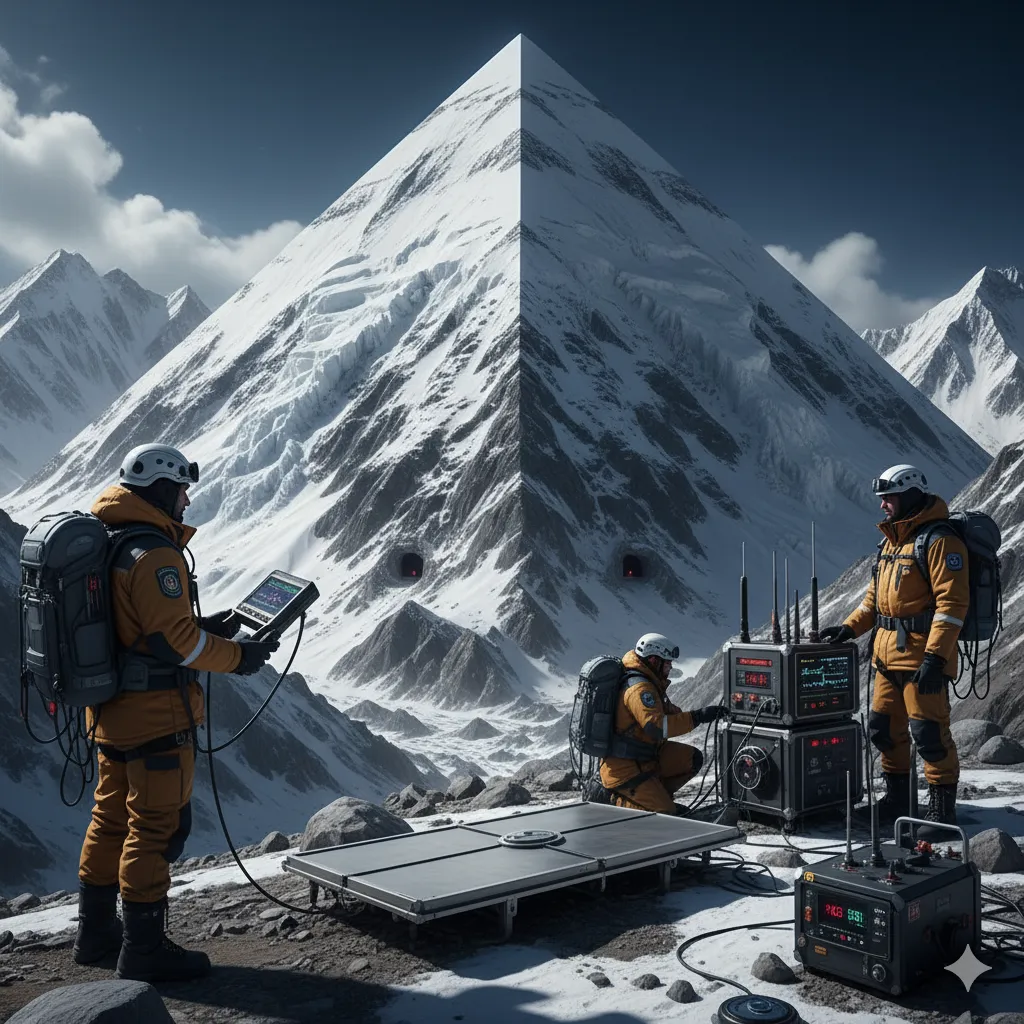
In 2005, a joint Chinese-Tibetan geological research team led by Professor Zheng Haixiang conducted extensive studies of Mount Kailash. Their findings were unusual enough to warrant further investigation.
The mountain, they determined, formed approximately 65 million years ago, shortly after the extinction of the dinosaurs. The rocks surrounding it, however, were significantly older. More intriguing was the discovery of extensive cave systems deep within the mountain's core, despite Kailash not being volcanic in origin. These weren't small cavities. They were vast networks, their purpose and formation mechanism unknown.
In 2015, the India-Nepal Joint Atmospheric Research Project, directed by Dr. Rajesh Kumar, measured extraordinarily high concentrations of negative ions in the air around Kailash. Negative ions are associated with improved health, enhanced mood, and accelerated healing. The levels recorded near Kailash were among the highest ever documented in a natural environment.
Local populations living near the mountain exhibited longer lifespans and better overall health than demographically similar groups elsewhere in the region. Plants in the area showed unusual resilience to harsh weather. Minor injuries sustained by visitors healed faster than expected. The reasons were unclear, but the data was consistent.
Then there were the magnetic anomalies.
In 2012, Dr. Sergey Kurchakov from the Russian Academy of Sciences measured Kailash's magnetic field and found it abnormally strong and irregularly distributed. Compasses behaved erratically. Electronic equipment malfunctioned. In 2016, Chinese Professor Zhang Liwei confirmed these findings and added a new detail: localized gravitational anomalies. In certain areas near the summit, the pull of gravity measurably differed from expected values.
Further studies in 2019 and 2021 corroborated the pattern. Something in the mountain's internal structure - an unknown material or an unusual concentration of known materials - was generating these effects. The leading hypothesis pointed to large metallic deposits or rare mineral formations, but no samples had been extracted to confirm this.
What made these scientific findings particularly strange was how closely they aligned with ancient descriptions of the mountain as a place where time behaves differently.
Pilgrims who complete the Kora circuit often report distorted time perception. What should take three days feels like one, or stretches to feel like a week. In 1995, National Geographic photographer Russell Johnson documented this phenomenon. He completed the circuit in two days but felt as though he had been there for seven.
This is not unique to Kailash. Similar reports come from other sacred sites: Mecca, Jerusalem, Stonehenge. But Kailash's effects seem more pronounced. And now there was a potential scientific explanation. According to Einstein's theory of general relativity, strong magnetic and gravitational fields can affect the passage of time. The effects are typically infinitesimal, measurable only with atomic clocks. But in extreme cases, localized distortions can occur.
Could Kailash's magnetic and gravitational anomalies be warping time perception for those near its summit? The data suggested it was possible, if not yet proven.
The geometric alignment added another layer of mystery. Kailash's four faces point almost exactly north, south, east, and west. Geological processes do not typically produce such precision. Erosion is chaotic, not orderly. Yet there it was, a near-perfect pyramid aligned to the compass.
In 1921, amateur archaeologist Alfred Watkins proposed the concept of ley lines, geometric alignments connecting ancient sacred sites across vast distances. The idea was dismissed by mainstream archaeology but gained traction in spiritual and alternative research communities. Kailash, proponents argue, sits at the intersection of multiple ley lines connecting it to other sacred sites: the Pyramids of Giza, Stonehenge, the temples of Angkor Wat and Borobudur.
Whether one believes in ley lines or not, the alignment is real. Mount Kailash, the Potala Palace in Lhasa, the Ellora Caves in India, and several other ancient structures all sit along the 30th parallel north. Coincidence, perhaps. Or evidence of something ancient civilizations understood that modern science is only beginning to rediscover.
Stories persist of climbers who approached the summit and aged rapidly. A Russian team in the 1990s allegedly experienced premature graying and extreme fatigue. A Spanish group reported similar symptoms. These accounts are difficult to verify and may be exaggerations born from altitude sickness and exhaustion. But they fit a pattern.
The mountain resists intrusion. Those who try to reach its peak are turned back. Not by soldiers or fences, but by the mountain itself. Weather that changes in minutes. Sudden illness. Inexplicable mechanical failures. And the persistent sense, reported by climbers across decades, that something is watching.
China officially prohibits climbing Kailash out of respect for religious tradition. But some researchers believe the ban has another purpose. If the mountain truly is hiding something, either in its caves or at its summit, keeping people away ensures it stays hidden.